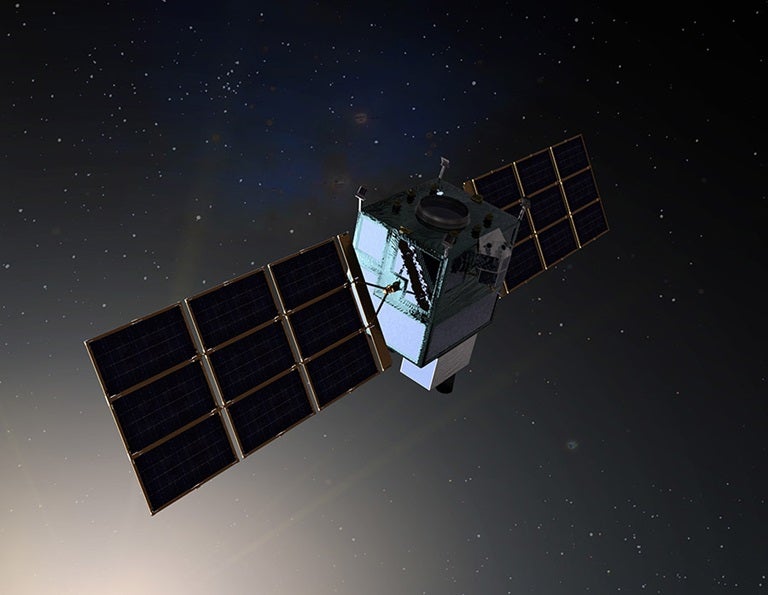Northrop Grumman Receives $235 Million Contract for Next Gen OPIR Polar Satellites

A Northrop Grumman rendering of Next-Generation Overhead Persistent Infrared (OPIR) polar-orbiting satellites. Photo: Northrop Grumman
The U.S. Space Force’s Space Systems Command has awarded Northrop Grumman a $235 million contract for the Next Generation Overhead Persistent Infrared (Next Gen OPIR) polar satellites 1 and 2 — a contract that brings the total value awarded thus far to more than $2.1 billion.
“Work will be performed at Redondo Beach, California, and is expected to be completed by July 25, 2026,” DoD said in an Oct. 5 contract announcement.
Northrop Grumman received a Next Gen OPIR polar contract worth up to $2.37 billion in 2020.
The Space Force’s fiscal 2024 budget zeroed research and development funding for one of the three planned geosynchronous orbit (GEO) Next Gen OPIR missile warning satellites by Lockheed Martin as the Space Force posits that having a band of many, smaller satellites in lower orbits will complicate an adversary’s anti-satellite targeting and improve deterrence against adversary ballistic and hypersonic missile attacks.
Last year’s appropriation for the Next Gen OPIR GEO satellites was nearly $1.7 billion, while the fiscal 2024 request comes in around $720 million–a reduction of more than $975 million. The fiscal 2024 request for Next Gen OPIR Polar is about $1 billion.
The House approved the elimination of the third Next Gen OPIR GEO satellite in the House’s fiscal 2024 defense appropriations bill, but House appropriators want an analysis from U.S. Strategic Command, the Space Force chief of space operations, and the Pentagon acquisition chief on how the elimination of GEO-3 will affect DoD’s Nuclear Command, Control, and Communications mission.
In March last year, Northrop Grumman announced its partnership with Ball Aerospace to design and develop the two polar highly elliptical orbit satellite payloads.
The satellites are to track ballistic and hypersonic missiles over the Northern Hemisphere.
“Broad coverage over the polar region offers the highest probability of spotting potential missile launches,” the company has said. “NGP [Next Gen OPIR Polar] can identify the infrared heat signatures of incoming threats and transmit this mission data to the ground. Based on the threat, decision-makers can then make responsive and informed decisions. This enhanced communication system also has resiliency features that reduce vulnerabilities to counter-space and cyberattacks.”